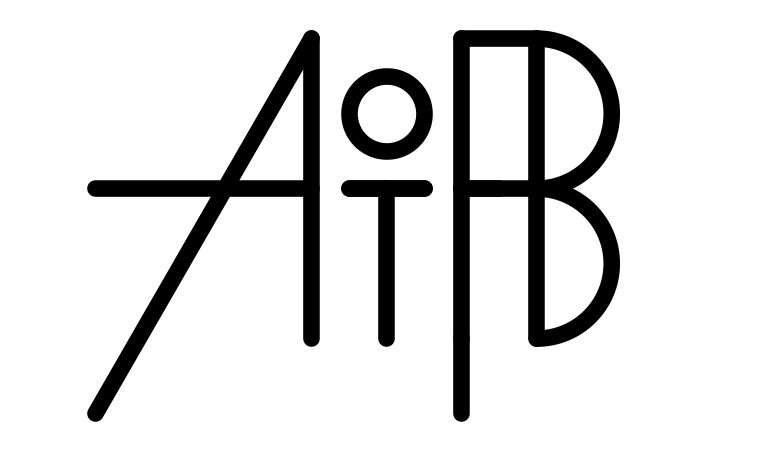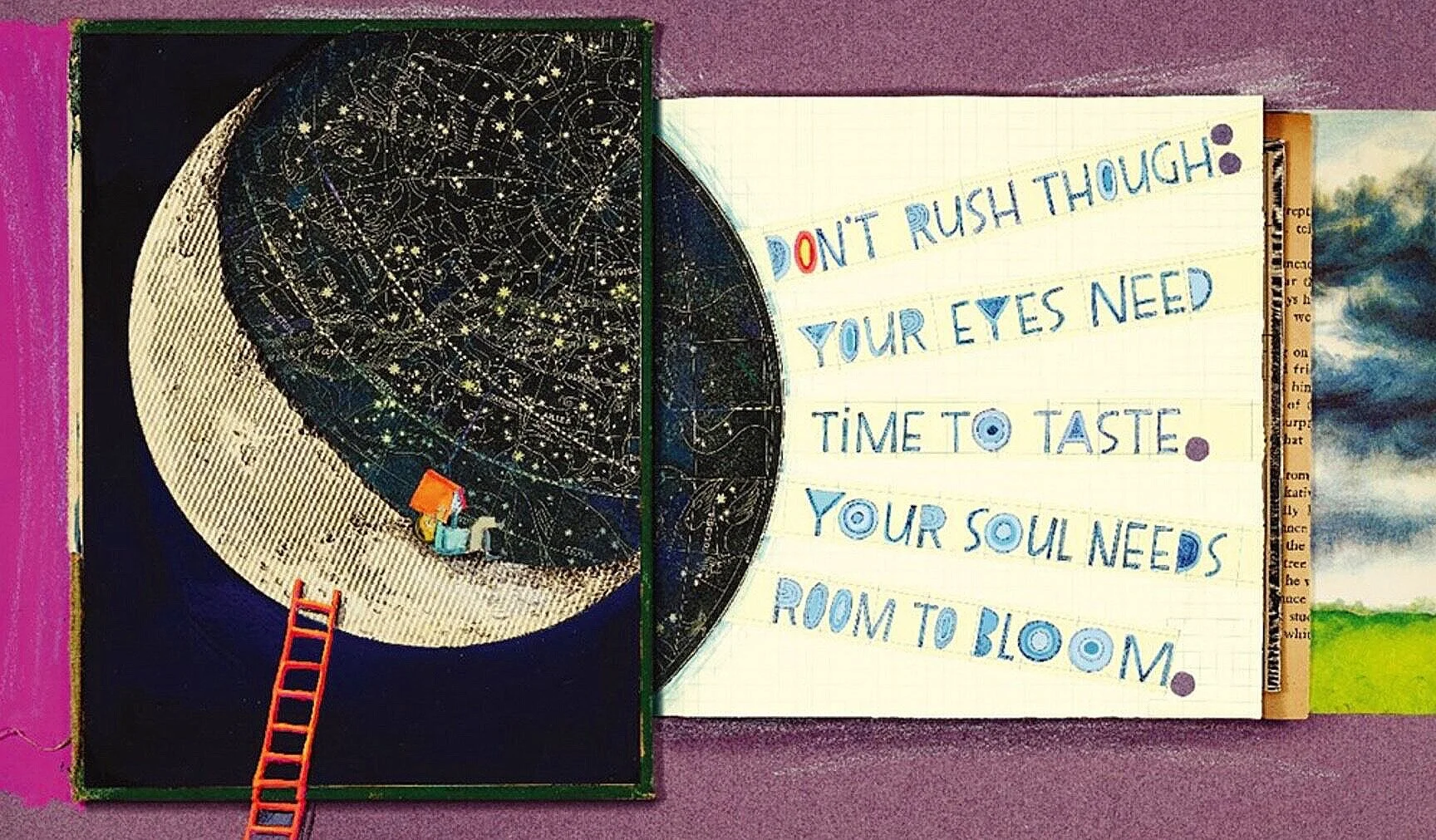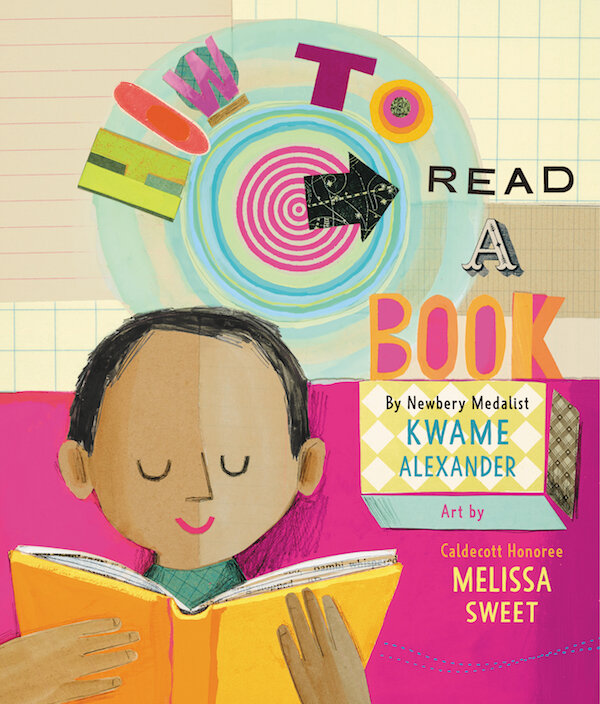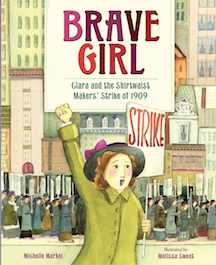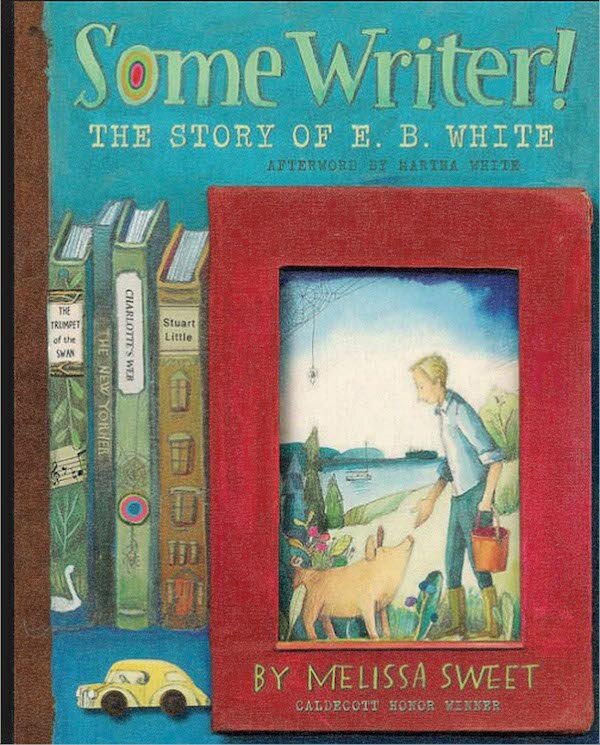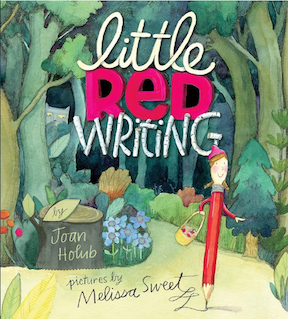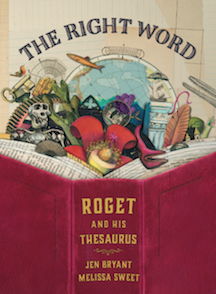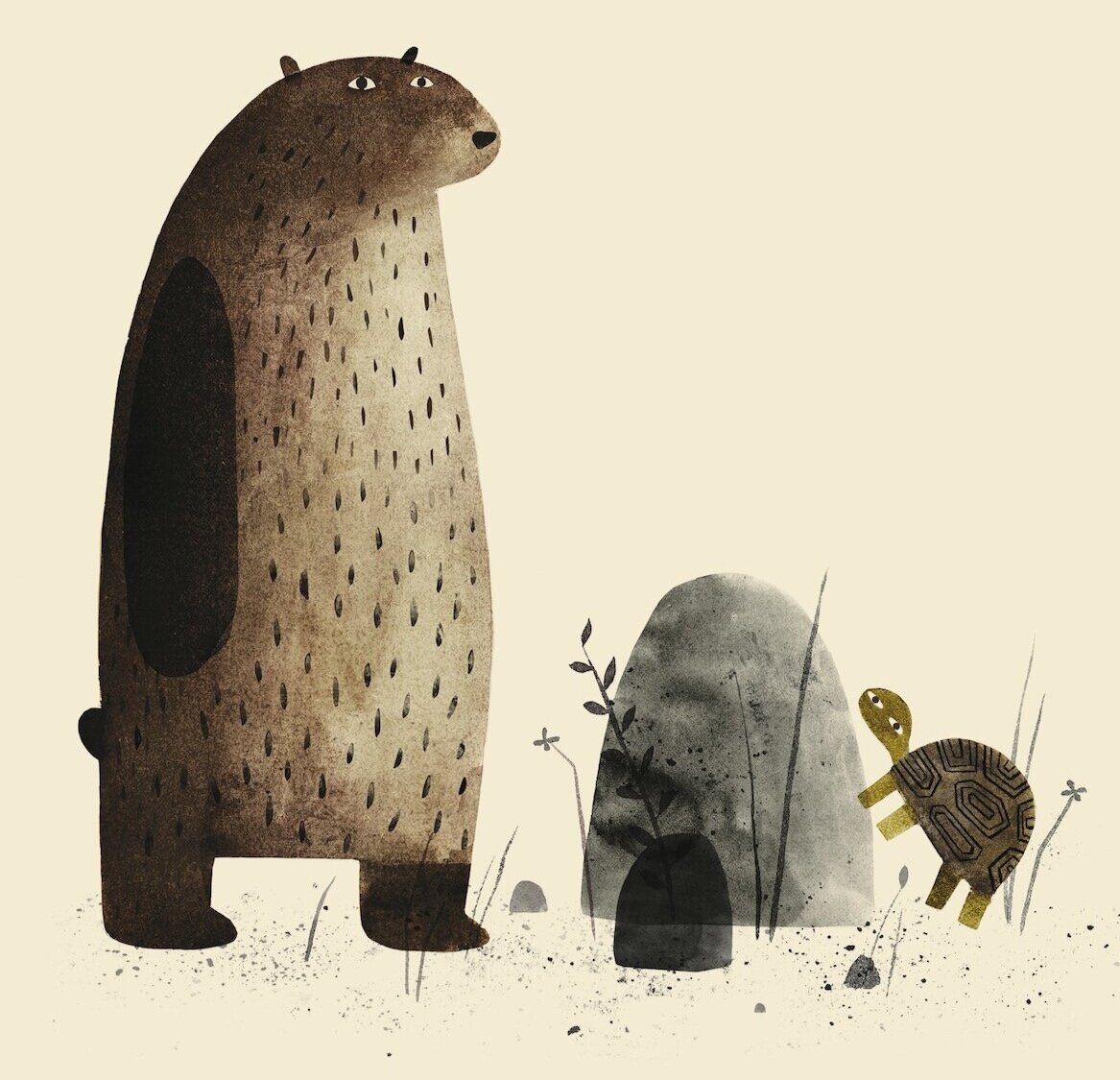An Interview with Melissa Sweet
Melissa Sweet
October 8, 2014
We interviewed Melissa Sweet, award-winning illustrator and author of children's books, including A River of Words: The Story of William Carlos Williams, a 2008 Caldecott Honor book and New York Times Best Illustrated Children's Book winner, and most recently, 2015 Caldecott Honor book, The Right Word: Roget and His Thesaurus , both by Jen Bryant and illustrated by Sweet. Sweet also wrote and illustrated Balloons Over Broadway: The True Story of the Puppeteer of Macy's Parade, the winner of the 2012 Robert F. Sibert Medal for the most distinguished informational book for children. She lives and works in Maine.
A Selection of Work
You are known for your extensive research work on your non-fiction projects. When you travel for research purposes, do you take photographs to use as reference material for your illustrations or do you make rough sketches and take notes? Or a combination of both?
When I set out, I travel with a small studio: camera, sketchbook, pens and pencils. But oftentimes I get somewhere and it's more about taking time to soak up what I'm seeing without being too diligent about recording it. The impressions of a place or archival material can be as inspiring as the meticulous details. Sometimes an image, a phrase, or a color palette can be the starting point, or inspire the whole book. And always with research, I read a good amount before I go, and even more when I return.
From Sweet’s sketchbook
Do you keep an on-going sketchbook for studies, ideas, and random images or do you sketch for a specific project?
It's much more random than I would like, but I do keep an archive for each project. Most of the time I start out with a shiny new sketchbook which dissolves into jotting notes while barely awake, tearing an image out a magazine, writing with lipstick on a paper bag while driving. But it doesn't matter how haphazard the process is, so long as it happens. Though there is nothing more awe-inspiring than an artist who has a shelf lined with their notebooks and journals. I admire that.
Preliminary cover sketch for The Right Word: Roget and his Thesaurus
Cover of The Right Word: Roget and His Thesaurus, by Jen Bryant, illustration by Melissa Sweet
What is it about watercolor that particularly appeals to you as an illustrator? Immediacy, serendipity, or is it something less tangible?
All of the above. The translucency and quality of watercolor paint is so beautiful and easy to use. I love how certain colors react to each other, for instance, raw umber and antwerp blue become a sort of speckled blue-brown when the paint dries. Painting with watercolors still surprises me everyday.
Recently I took a plein air oil painting class, (I like putting myself in a place where I know nothing) and the paint went on the canvas like butter. There is nothing like oil paint, but it will take more classes to figure it out.
What is one of the picture books from your childhood that was a favorite? Do you still have a copy?
My dad read aloud to us from the Little Bear series (by Else Holmelund Minarik, illustrated by Maurice Sendak) and I especially loved Father Bear Comes Home.
I don't have any of my original childhood books (but I've bought enough books over the years to more than make up for them!). Sendak's expressive line illustrations have stayed with me since childhood. When I thought of becoming an illustrator, that was my benchmark.
In an interview with Julie Danielson, you made the comment that "Each book makes me see the world (and how I make art) differently." We love that sense of adventure in the way you approach illustration. Can you elaborate on the impact you get from the connection with such a variety of manuscripts?
That's a great question. Each manuscript is completely different and with each one I begin to relate to the world through the eyes of my subject.
A River of Words: The Story of William Carlos Williams, by Jen Bryant, illustration by Melissa Sweet
In A River of Words, William Carlos Williams created a new form of poetry that inspired me to look at advertising of the 1920's, Kurt Schwitters, Lenore Tawney, and Modernist paintings. I illustrated Williams's poems by integrating hand-lettered and collaged words into my art.
Cover of Balloons Over Broadway, Melissa Sweet
When I was researching the illustrator and puppeteer for my book Balloons Over Broadway, I saw how Tony Sarg could go back and forth between 2-dimensional and 3-dimensional art seamlessly. How does that translate into a book? I started making puppets and toys to be photographed as part of the art. I was looking at everything from the point of view of: how can I animate that?
Cover of Little Red Writing, by Joan Holub, illustration by Melissa Sweet
Dedication page from Little Red Writing, by Joan Holub, illustration by Melissa Sweet
Interior spread from Little Red Writing, by Joan Holub, illustration by Melissa Sweet
Interior spread from Little Red Writing, by Joan Holub, illustration by Melissa Sweet
Interior spread from Little Red Writing, by Joan Holub, illustration by Melissa Sweet
Interior page from Little Red Writing, by Joan Holub, illustration by Melissa Sweet
While working on Little Red Writing, with everything I read, I saw the punctuation, the adjectives, nouns and adverbs. I learned a lot about grammar working on that book!
Interior spread from The Right Word: Roget and His Thesaurus, by Jen Bryant, illustration by Melissa Sweet
From The Right Word: Roget and His Thesaurus
The Right Word: Roget and His Thesaurus, is about Peter Roget, a boy who made lists that eventually became the ubiquitous resource book. I began to see everything as a list. A simple walk with my dogs became an exercise in listing the world. But it is a way of working out the challenges that come up, especially with biographies. And none of that goes away — it becomes a part of one's artistic vocabulary.
Are any of your paintings digitally edited by you or do the final printed illustrations come directly from your original art?
All my art is as you see at 100%. Almost nothing is touched by a computer in Photoshop. The final spread for The Right Word needed Photoshop because, as an intense list of 1000 words, it needed imagery to break it up.
I respect the computer as a tool but the fun of being an artist is making art. The process for me is so much quicker. I need to push paper around and feel a sense of serendipity.
Cover of Brave Girl: Clara and the Shirtwaist Makers’ Strike of 1909, by Michelle Markel, illustration by Melissa Sweet
Interior spread from Brave Girl, by Michelle Markel, illustration by Melissa Sweet
Interior page from Brave Girl, by Michelle Markel, illustration by Melissa Sweet
You've commented on the critical importance of libraries, particularly in small communities such as yours in Maine, as being the "anchor." With the computer, the Internet, and ebooks, what is your sense of the library's role in introducing children to reading in these electronic times?
My town is only about 3000 people in the winter (and winter seems like nine months of the year). Our library programming is a hub of our town. One thing that distinguishes the Rockport Library is that at story time they often have a craft that relates to the book, which I would've loved as a kid. No doubt that hands-on activity brings a story to life.
Cover of Firefly July: A Year of Very Short Poems, selected by Paul B. Janeczko, illustration by Melissa Sweet
Interior spread from Firefly July: A Year of Very Short Poems
Your recent projects, Firefly July and the The Right Word, are such different manuscripts, one a collection of poetry and the other, a picture book biography. Any thoughts on your process for those projects as a contrast/compare?
Where a book takes me is a constant surprise. I thought The Right Word would be a piece of cake since I love working with words, but deciding how to craft his lists took many months in the end. It's like Fred Astaire's dancing – he made it look spontaneous from really working at it.
But in the middle of working on The Right Word, I had to set it aside in order to finish the art for Firefly July on time. The art for Firefly July was created with watercolor, gouache and paper bags, (and other papers). Limiting the materials gave me a sense of freedom and abandon. Creating the art was so rejuvenating that when I went back to The Right Word it felt completely new. That was exactly what I needed to finish the book. Both books came out this year and could not be more different, but they really influenced each other.
Thank you, Melissa, for sharing with us a glimpse into your creative approach to illustrating and writing for children.
For more on Melissa Sweet:
All images used with permission from Melissa Sweet.

